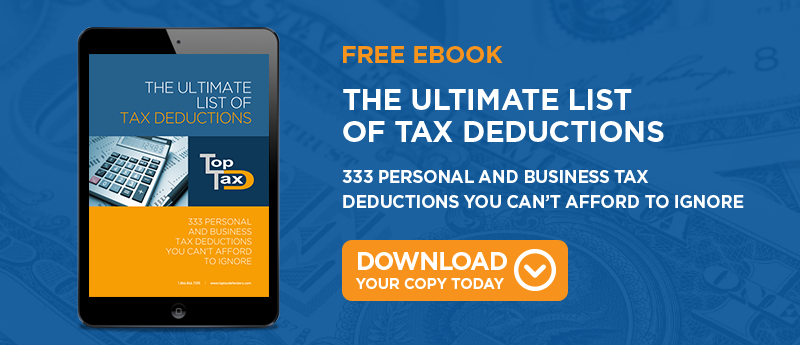
Sometime before the big, jeweled ball drops on January 1, 2020, you should take some time to maximize your tax savings, not only for 2019 but as a tribute to yourself for 2020. There are only a few weeks left. You need to fit it in between all the holiday prep and celebrations.
Maybe you aren’t aware of all the ways you could change your tax profile for the better. That’s why we made this post. Even if you know a lot about taxes and the changes that have happened over the past year, you still might find a diamond in the rough.
Here’s what you can do.
Check Your Withholding
The easiest thing to do is double-check your withholding. If you didn’t have your tax professional develop a W-4 to match your current wages, or if you did and just didn't hand it to your payroll department, now is an excellent time to set it up for next year.
Taxes and people change all the time. It's always worth it to make sure you have the correct amount of withholding from your paycheck, so you don't over or underpay. It may be tempting to overpay so you can get a big refund, but you can do better by investing the extra money each pay period in something that earns a little interest or some dividends.
Compare the New Standard Deduction with Itemizing and Business Expenses
The personal exemption went away, but the standard deduction just about doubled. Run the numbers to see if you are better off taking the new standard deduction or if you can save more on taxes by itemizing and writing off business expenses.
How do you know what’s deductible? The IRS says that a business expense must be ordinary and necessary. So, you might be able to write off a new laptop, but not the snowboard you bought for vacation at Jackson Hole.
Some commonly deductible business expenses:
- Home office expenses
- Using a vehicle for business
- Rent
- Interest payments
- Insurance, including health insurance premiums if self-employed
- Employee salaries
- State and local taxes, including your estimated quarterly tax payments
- Business travel expenses
- Retirement plan contributions for you and your employees
Add up your itemized deductions and business expenses and compare the result to the standard deduction available through the Tax Cuts and Jobs Act. Use whichever is more beneficial to you.
Review Medical Bills and Spend Your Flexible Spending Account
Deducting medical expenses is getting a little easier. If you spend more than 7.5% of your adjusted gross income on medical costs, you can deduct them. If you have put off any appointments or treatments, get them done before the end of the year. Chasing those statements is especially worth it if itemizing takes you past the standard deduction.
If you funded a flexible spending account (FSA) with pretax dollars, don’t waste them. Your taxable income has already been reduced, but the leftover money usually isn't rolled over to the next year.
Take a trip to the drugstore and stock up on bandages, hand sanitizer, lens wipes, contact lens solution, and sunscreen. Eyeglasses are another place to spend those dollars, even for readers you buy off the rack.
Check Out ABLE Accounts and Other Dependent Credit
If you support someone in your family with special needs, you can contribute to an ABLE account. People with qualifying disabilities can save without losing government benefits. If you are a resident of a state that offers a tax break for ABLE accounts, you can deduct what you contribute while still taking advantage of benefits.
Other Dependent Credit is available to you if you support your parents, grandparents, or another loved one who qualifies as a non-child dependent. The credit is worth up to $500 and reduces the taxes you owe dollar for dollar.
Max Out 529 College Savings Plans, Prepay Tuition, or Take a Class
Take advantage of the various tax-saving opportunities you have through educational spending.
- A 529 College Savings Plan allows you to contribute post-federal tax dollars into an account that grows tax-free. Also, it can be withdrawn tax-free if you use it for qualified educational expenses. Besides growing and withdrawing your money tax-free, if you pay state income tax, the money you place into a 529 lowers your state tax liability.
- Prepay tuition. If you have a college student, you could lower your tax bill by prepaying the first quarter tuition bill and taking advantage of the American Opportunity Tax Credit. For students in their first four years of undergraduate study, you can get a tax credit for up to $2,500 for each qualifying student.
- Take a class. The Lifetime Learning Credit is available to those who take courses to advance their careers or improve skills. If you pay for next quarter's tuition, you may earn a tax credit of up to $2,000.
It’s like your parents always said. Education pays dividends. (Or in this case, credits.)
Convert IRAs to Roth Accounts
If you have a traditional IRA and still have several years until retirement, consider taking some or all of that IRA and convert it to a Roth IRA this year. Be sure not to go over the top of your tax bracket.
Sure, you'll have to pay taxes on the conversion (except for nondeductible IRA contributions), but the money then grows tax-free in the Roth after that. If you spread the conversions over several years, you can avoid putting yourself into a higher tax bracket now.
Caution: if you are within two years of applying for Medicare and perform this conversion, you will pay extra for Medicare Part B. If your adjusted gross income plus tax-exempt interest income is more than $85,000 for filing single or $170,000 for married filing jointly your Medicare premium increases.
The last tax return on file when you apply for Medicare determines your premiums. Therefore, your 2019 return can influence your 2021 premiums.
Whew! If you look into every one of these, you have your work cut out for you. Here are some other ideas to research, as well. Look into whether tax harvesting is right for you, or how giving to charities can lower your tax bill. If you own a business, set up the right retirement plan. Max out your HSA or defer income.
If you have questions about any of this, or if you want to hear more about lowering your tax liability, contact Top Tax Defenders.




